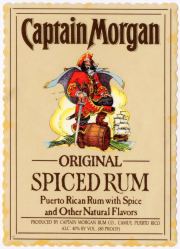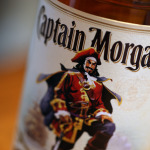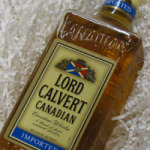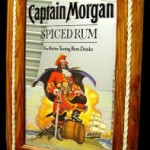Lauren Bacall, Gregory Peck and Frank Sinatra
Back in the day when Seagram was alive and well, there were many sponsored events, particularly when Universal-MCA was in the picture. It 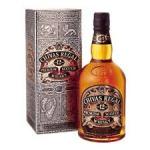 was not unusual, therefore, for the company to be front and center, underwriting the event (or parts of it) in exchange for publicity and press. In addition to the “Step and Repeat” backdrop, the sponsoring brand received widespread exposure and linkage to celebrities.
was not unusual, therefore, for the company to be front and center, underwriting the event (or parts of it) in exchange for publicity and press. In addition to the “Step and Repeat” backdrop, the sponsoring brand received widespread exposure and linkage to celebrities.
Some events were strictly sponsorship (e.g., Crown Royal and the Rodeo) and many were charity events that a particular brand supported and even underwrote.
I’d like to tell you the story about one such charity event that involved Lauren Bacall.
The Event
It was in the late 1990s, and the Design Industries Foundation Fighting Aids (DIFFA) and the Motion Picture & Television Fund (MPTF) organized the fundraising dinner. Since it was held at the Cipriani in lower Manhattan, you can be sure it was way beyond a rubber chicken dinner. Chivas was the sponsor and other Seagram spirits and wines were served.
Based on the cause and the Universal-MCA connection, the attendees were all ‘A’ list. I remember stars of stage, screen and the fashion world in attendance, including Lauren Bacall, Michael Douglas, Richard Gere, Vera Wang, to name a few. It must have been a harrowing experience to organize and execute the event and photo shoots. But the Seagram corporate PR folks, led by Karin Timpone, had it under control.
The Request
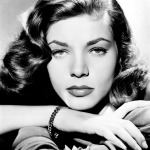
I wish I could find the photo that included yours truly, Lauren Bacall, and a number of others, whose names escape me. But, trust me when I say it was a hoot to pose with the legendary Ms. Bacall, a Tony and Golden Globe winner as well as Academy award nominee. I’m guessing that she must have been in her late 70s at the time and still extraordinarily classy and impressive. I’m not particularly star struck but, come on, she starred with (and was married to) Humphrey Bogart, was in films with Kirk Douglas, Gary Cooper and, all in all, an icon of theatre and film.
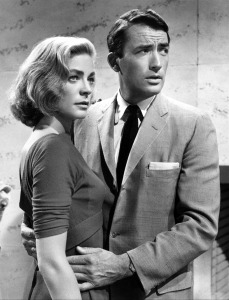
The photo shoot ended. I thanked her for coming, for the opportunity to pose with her and expressed gratitude on behalf of Chivas Regal. Her response was a courtly nod and she said, “I like Chivas Regal, can I get some sent to my home?” “Of course Ms. Bacall” I replied and asked Karin to have someone arrange for a case of Chivas to be delivered to her.
I no sooner got the words out when she said, “You know, my friend Gregory Peck also likes Chivas Regal, can you get a case to him in Palm Springs?” Gregory Peck? Holy cow, her co-star in the film Designing Woman and among my favorite actors. I couldn’t get these words out fast enough either – “Certainly… absolutely… we’ll take care of it.” She thanked me and the session was over.
The Aftermath
I totally forgot about the incident. Sometime later in the spring of 1998, I received this letter from Gregory Peck:
Dear Arthur,
Our thanks for the beautiful gift of a case of Chivas Regal. I am a great admirer of this beverage.
Contrary to popular belief, our friend Frank Sinatra did not partake exclusively of Jack Daniel’s. In his desert retreat, he sometimes joined me in a Chivas and Perrier, with perhaps a lemon twist, or a dash of bitters.
With appreciation and best regards,
(Signed)
Gregory Peck.
The letter was dated May 26, 1998 and Frank Sinatra died on May 14, 1998 hence, the reference to Sinatra.
But, I was puzzled. Did Lauren Bacall get her case of Chivas? I was assured that it had been delivered but no acknowledgment was received. Oh well, that’s show business. I didn’t give it another thought.

That is, until a few months later.
I was having lunch with a good friend and principal of an ad agency. I told him the story and my thrill at the Gregory Peck note and surprise at the lack of response from Lauren Bacall. He laughed and said that he had an interesting comparable experience to share.
It turns out that his agency had hired her to be the voiceover for a cat food commercial. It was undoubtedly a 7-figure deal. After the day’s shoot she told a production assistant that she’d like to have a case of cat food sent to her home. The agency decided to send a case of each of the varieties, perhaps 3 or 4 cases of cat food.
“Did you hear back from her?” I asked.
“Nope, not a word… and here’s the strange part… we found out she doesn’t even own a cat.”
But I bet she drank the Chivas Regal.
(Thanks to Karin Timpone for refreshing my memory.)

